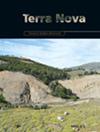秃鹫火山(意大利南部)富含二氧化碳的异岩石:火山管道系统的新制约因素
IF 1.7
3区 地球科学
Q2 GEOSCIENCES, MULTIDISCIPLINARY
引用次数: 0
摘要
这项研究提供了新的矿物化学数据,以及对寄存在由秃鹫山最后一次火山活动(140 ka;意大利南部)带到地表的超基性闪长岩(黑云母、钨闪长岩和白云母)中的流体包裹体进行的微测温测量。秃鹫山异长岩的岩石学证据和矿物学成分与上地幔的起源一致。岩石形成矿物中的流体包裹体以二氧化碳为主。通过地温估算计算出的平衡温度在1039℃(±36℃)到1142℃(±15℃)之间,捕获后再平衡的流体包裹体的夹带压力与当地地壳-地幔边界(32千米深)以及位于12-14千米深的浅储层相对应。这些结果有助于确定这些异质岩的来源以及秃鹫山喷发岩浆的贮存深度,在秃鹫山,碳酸盐岩类变质作用和来自地幔的二氧化碳脱气作用时有发生。本文章由计算机程序翻译,如有差异,请以英文原文为准。
CO2‐Rich Xenoliths at Mt. Vulture Volcano (Southern Italy): New Constraints on the Volcano Plumbing System
This study provides new mineral chemistry data together with micro‐thermometric measurements on fluid inclusions hosted in ultramafic xenoliths (lherzolite, wehrlite, and dunite) brought to the surface by the last Mt. Vulture volcano activity (140 ka; southern Italy), and fed by melilitite‐carbonatite magmas. Petrographic evidence and mineralogical compositions of Mt. Vulture xenoliths are consistent with an origin in the upper mantle. Fluid inclusions in rock‐forming minerals of lherzolite and wehrlite xenoliths are CO2 ‐dominated. The equilibrium temperature calculated by geothermometric estimates ranges from 1039 C (±36°C) to 1142°C (±15°C), and entrapment pressures of fluid inclusions with post‐trapping re‐equilibration correspond to the local crust–mantle boundary (32 km depth), and to a shallow reservoir located at 12–14 km depth. These results contribute to constrain the origin of these xenoliths and the depth of storage of magmas erupted from Mt. Vulture, where carbonatite‐like metasomatism and mantle‐derived CO2 degassing occur.
求助全文
通过发布文献求助,成功后即可免费获取论文全文。
去求助
来源期刊

Terra Nova
地学-地球科学综合
CiteScore
4.80
自引率
8.30%
发文量
59
审稿时长
2.3 months
期刊介绍:
Terra Nova publishes short, innovative and provocative papers of interest to a wide readership and covering the broadest spectrum of the Solid Earth and Planetary Sciences. Terra Nova encompasses geology, geophysics and geochemistry, and extends to the fluid envelopes (atmosphere, ocean, environment) whenever coupling with the Solid Earth is involved.
 求助内容:
求助内容: 应助结果提醒方式:
应助结果提醒方式:


